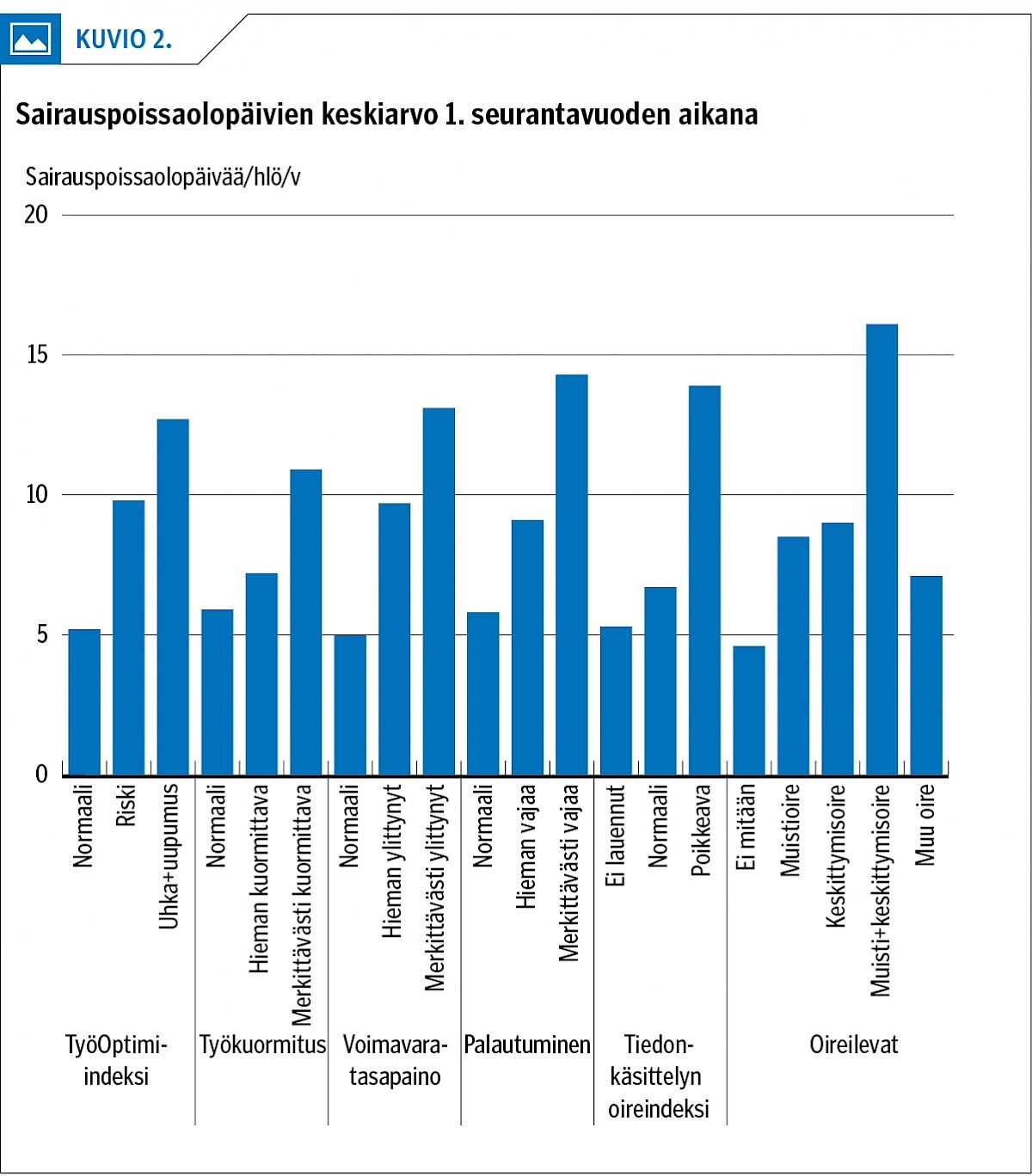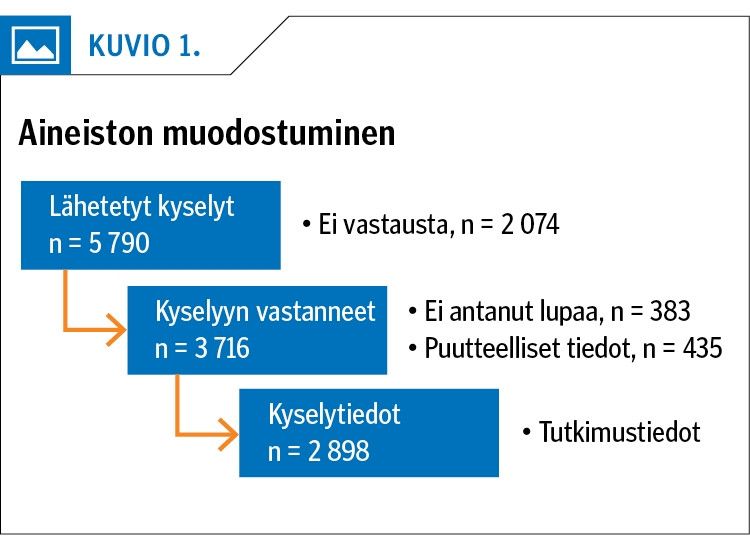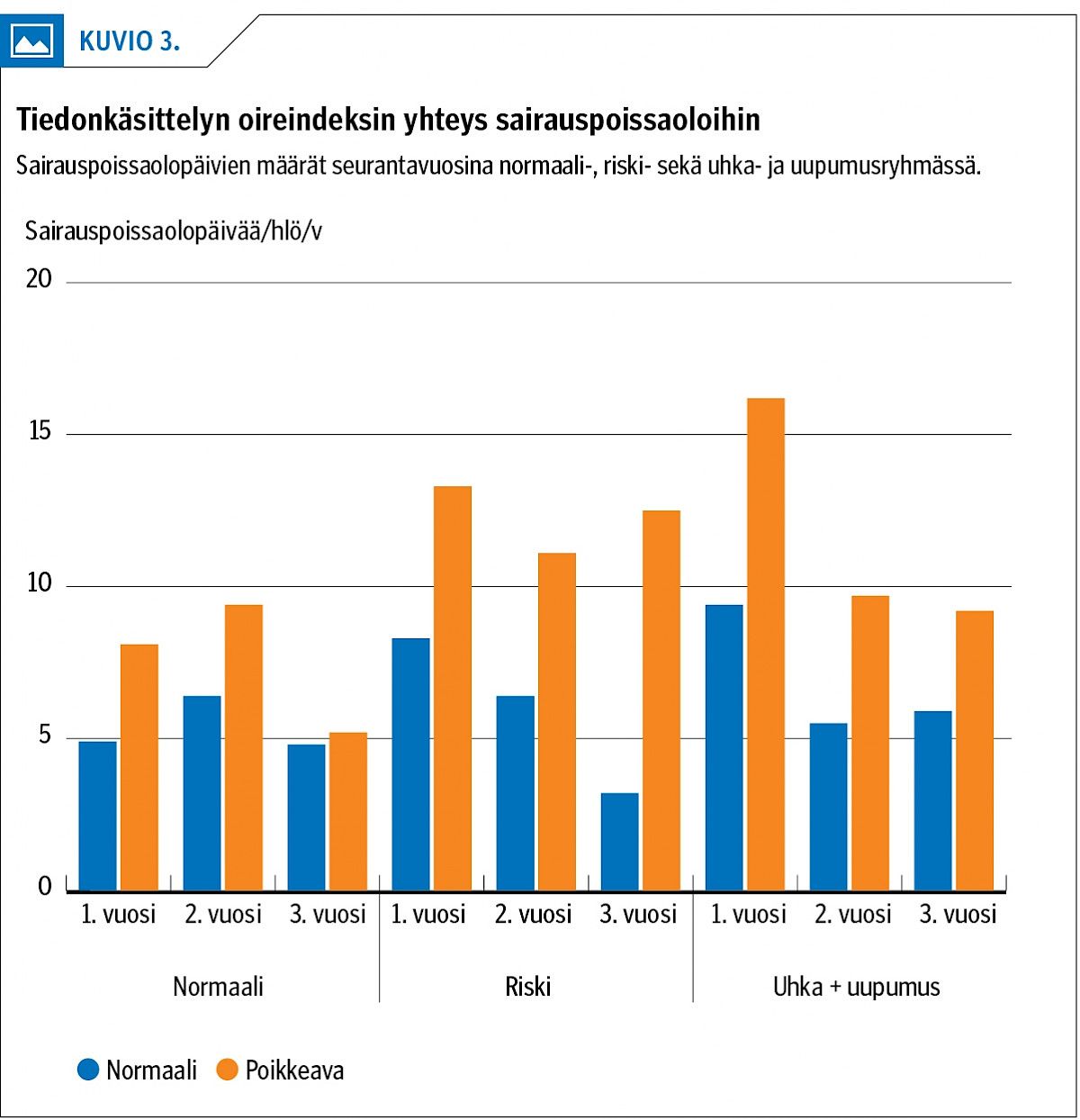Can knowledge-intensive workers at risk of absenteeism be identified using a questionnaire?

Background The health impacts of knowledge-intensive work and stretching of working time do not appear in the diagnostic categories of sickness absence statistics. This study aimed to find out how a questionnaire survey can predict the work capability risks generated by ICT work.
Methods The survey results of 2898 workers, obtained prior to the occupational health check, were compared to the sickness absenteeism data obtained from the company including self-reported absences during 2010–2014. The statistical method used was binary logistic regression analysis and variance analysis using the Bonferroni correction factor.
Results The results of the survey reflected the risk of absenteeism and the number of sick days. The OR for absence was 1.7 in the risk group and 1.6 in the threat of absence and fatigue group. The OR for at least 30 days of absence was 2.3 in the risk group and 4.1 in the threat and fatigue group. An abnormal result for the information processing index further refined the prediction for the third year (OR 3.3) as did spontaneously reported simultaneous memory and concentration symptoms (OR 3.4).
Conclusion The survey also predicted future sickness absenteeism amongst knowledge-intensive workers with past low sickness absenteeism. Cognitive symptoms predicted sick-leave days and long absence.
















